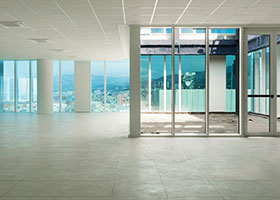4 Benefits of Open Office Layouts
Breaking Down Barriers in the Work Environment
 In an era where open office layouts have become the norm at many companies, the debate over the productivity and efficiency of open versus enclosed workspaces continues. While both have their advantages and drawbacks, corporations and businesses large and small have done away with cubicles and walls in favor of a more open and collaborative workspace.
In an era where open office layouts have become the norm at many companies, the debate over the productivity and efficiency of open versus enclosed workspaces continues. While both have their advantages and drawbacks, corporations and businesses large and small have done away with cubicles and walls in favor of a more open and collaborative workspace.
The Rise and Fall of Cubicles
Enclosed by walls on three sides, cubicles were designed to increase employee productivity and concentration by eliminating the distractions posed by office chatter. First introduced in the 1960s, cubicles became a commonplace feature in American offices in the ‘80s and ‘90s as large corporations merged and the need for less-than-permanent workplaces increased. As explicitly expressed by the main character of the popular 1999 movie “Office Space”, the office cubicle came to symbolize the repressive, soul-killing, and at times, dispensable, nature of many white collar jobs at large corporations.
The Trend Towards Open Office Layouts
Over the past fifteen years, the cubicle has become increasingly rare as companies like Google, Facebook, and countless tech, media, and communication agencies have made the switch to open office layouts. Today, over 70 percent of all office layouts are open. Here are a few of the reasons why:
-
Communication
One of the most obvious reasons for open office layouts is that they facilitate communication and workflow between employees. Rather than having to knock on doors, peer around walls, or schedule office meetings, coworkers and supervisors can easily talk to each other at their desks, often without having to pause from their current tasks.
-
Management
While walls can help keep distractions out, they can also help hide employees who might take risk taking a nap, playing computer games, or doing anything else besides what they are being paid to. In addition to making it easier for bosses, managers, and coworkers to keep an eye on each other, it is easier to get people’s attention for announcements and impromptu meetings.
-
Camaraderie
Besides stifling teamwork and communication in the office, walls and barriers can make employees feel more removed from their coworkers and bosses, which in turn can decrease morale and productivity. By allowing workers to communicate and collaborate freely throughout the workday, open offices can create happier and more efficient work environment.
-
Cost
One of the most practical reasons for business-owners to adopt open office layouts is that they are more economical. Rather than housing workers in their own cubicle or office, open floor plans are less expensive and allow greater flexibility for accommodating change. Those footing the bills of the office space can also benefit from lower utility bills as the open space allows central lighting, heating, and air-conditioning to better reach all areas of the office space.
Creating a Better & More Productive Work Environment
Office design is just one of the many factors that affect how employees function in their work environment. Since 1996 E3 Consulting has been helping businesses create happier, healthier, and more productive work environments for their employees. To learn more about ergonomics, wellness and other E3 Services your company can benefit from, contact us or click the button below.

